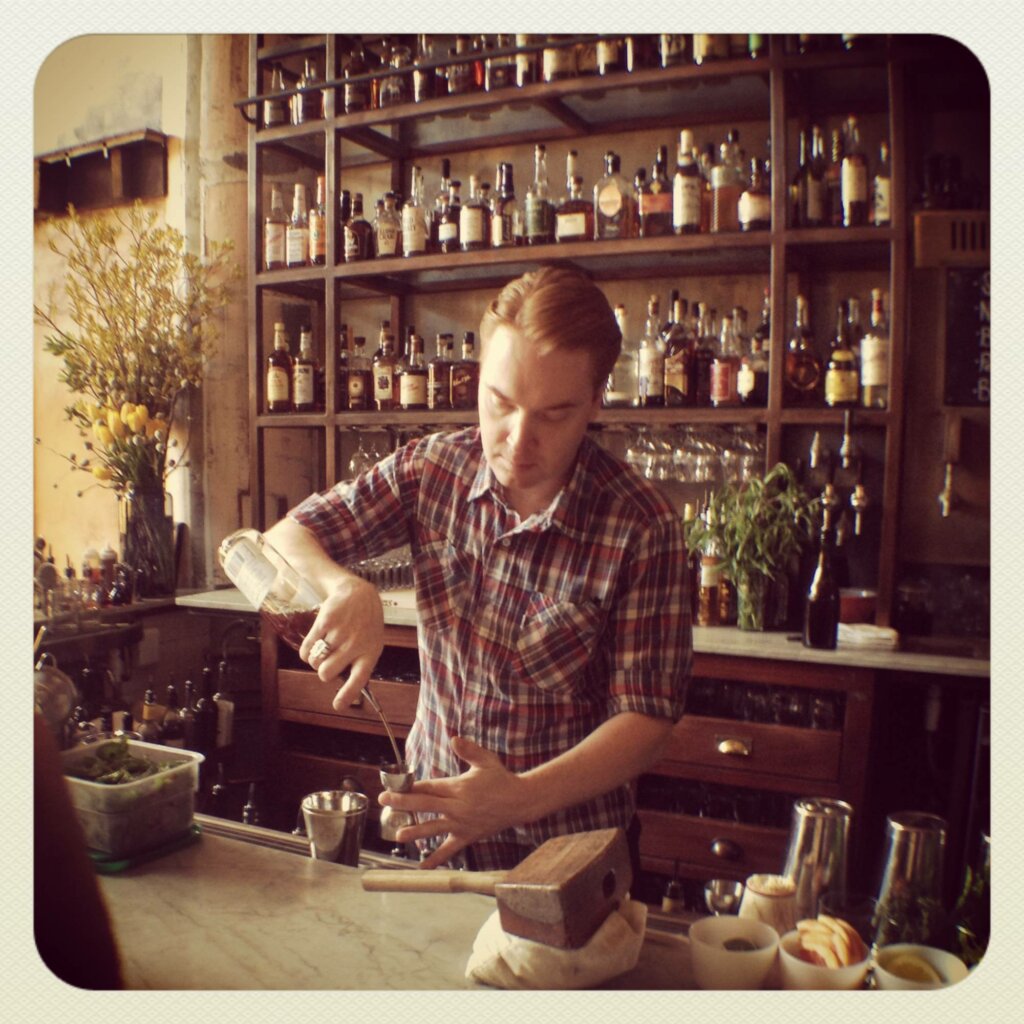Design for Engagement: The Evolution of Bartending
May 27, 2014As our founder, Jill Tracy, stated earlier this year, people connect with other people (not companies) and it is the people themselves that are the foundation of any successful social media program. I joined Creative BSTRO as VP of content and social strategy earlier this year and lead a number of social initiatives for both our company and our client partners. I previously led the social media programs for both StubHub and eBay for six years and as Chief Blogger for eBay from 2008-2012, I came to equate the role of corporate blogger to that of a bartender for brands.  The analogy being that there are 200 or so people involved in the creation of any given pint of beer – from the farmers to the water company to the distributors, etc. – but the only human interaction you have with that pint when you go into a pub or bar is the bartender who serves it to you.
The analogy being that there are 200 or so people involved in the creation of any given pint of beer – from the farmers to the water company to the distributors, etc. – but the only human interaction you have with that pint when you go into a pub or bar is the bartender who serves it to you.
You create a relationship with that bartender. Taking that a step further, the English pub or neighborhood bar was essentially the first social network. The hub where workers, farmers, butchers, etc., all came together to share stories over a pint.
Any member of the communications team – particularly on the social media side – has that role for any organization. When they represent their company and their business on any level externally, they are bartending for that brand and each individual blog post represents a large number of colleagues and friends.
7 Keys to Social Marketing I Learned Behind the Bar 1. Be a good listener One of my favorite billboards a few years ago was for the beer, Leffe. It simply said, “Actually listening, not waiting to talk.” Successful brands listen to the needs and wants of their consumers rather than simply broadcasting their own message. The real success of bartending lies with making a strong connection with the customer; listening to their stories and helping with their problems. To that end, social marketers must know what to listen for and when to speak in order to engage with the customer. 2. Be Flexible Like bartending, social marketing – and blogging specifically – is cyclical. Some shifts are slow, some are fast… and some are just flat out insane. There’s always a mix of customers to engage with on a minute-to-minute basis and each one has their own unique needs and wants. Flexibility and an ability to adjust tonality and approach on a real-time basis are keys to success. 3. Be Passionate Forget Tom Cruise in Cocktail. This job is not glamorous. It’s long hours with a lot of changing and challenging factors to contend with. The point of communication is just a small piece of the puzzle. Like opening and cleaning up a bar, prep work and analysis and optimization of every piece of marketing communication are just as important as the point of interaction itself. You have to be willing to roll up your sleeves and display that passion regardless of how much sleep you’ve had or how long your shift has been.

4. Be Cool Under Pressure Anyone in a public-facing role on behalf of their organization has to keep their cool under pressure. Bartenders are consistently face-to-face with their customers, working with many different personalities at any given time. Because social marketers work in an always online environment, acting as the brand’s voice itself, they cannot afford to lose their cool and must maintain their patience at all times. (You can think it but I highly recommend breathing deeply and counting to 20 before you say something you may regret!). 5. Be Consistent Social marketing continues to evolve at a breakneck pace and marketers have to be able to use a variety of social tools at any given time. Just as new drinks and trends come into the bar on a regular basis, marketers have to keep up with the latest trends and developments all while sticking to a consistent content calendar and regular schedule of posts. 6. Be Agile Bartenders work on their feet. They’re on the floor, pulling bottles, taking orders and pouring drinks. Similarly, the social marketer is constantly tending to the needs of the brand. We’re onsite, listening and responding to needs but also public-facing, acting on opportunities and threats. 7. Be Selfless This is the most underappreciated and toughest aspect of bartending and social marketing. It’s counterintuitive really. While you sit at the center of the activity, it’s not about you at all – it’s about the customer. It’s about taking all of the other traits and putting them to good use. It’s about serving up a good story time after time and making it meaningful to your audience and not about your ego.
The Evolution of Bartending
There has been a resurgence of mixology of late, with consumers looking for a unique, intricate cocktail experience that goes beyond the mere ingredients of the drink and the bartender who serves it. The enjoyment of these beverages has become a complete experience; it is a package deal with each minor part adding up to a larger whole.
When I sit back and examine the makeup of our agency, I realize that for the past 10 years we have been carefully and strategically built to deliver a similar experience. Like the team of farmers, brewers, distributors and bartenders taht are behind the scenes of each beer, our team is made up of in-house designers, developers, writers and strategists all bringing their unique perspectives to examine creative projects from every angle as they work side by side.
This unique collaboration – the sum of our parts – allows us to deliver an end-to-end, fully integrated brand identity and voice for our client partners regardless of whether it’s online or off; social or web; CRM or digital advertising (or all of the above).

All that’s left to say is…Cheers!
RBH
Richard Brewer-Hay
VP, Social & Content Strategy
